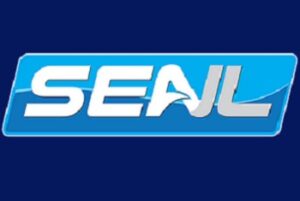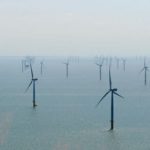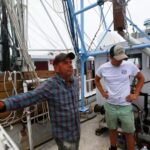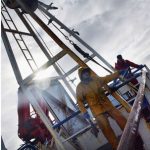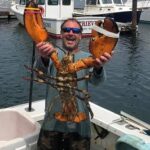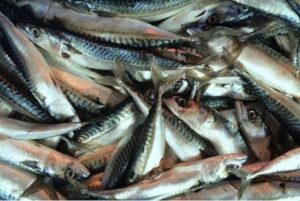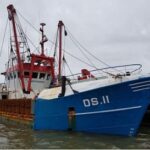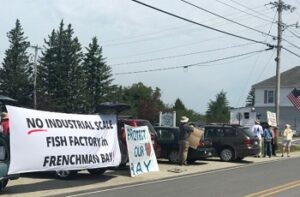Category Archives: Pacific
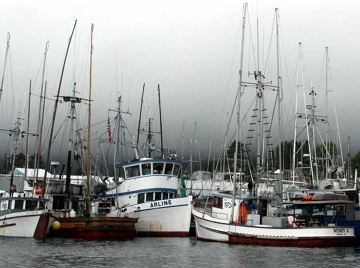
Chinook catch falls short in first Southeast troll opening. Fleet gets a another shot.
Southeast’s commercial troll catch of king salmon fell short of its target in the first summer opening in July. The fleet gets another shot at those chinook in a second fishing period that starts Friday, Aug. 13. The region’s king salmon catch is managed under the Pacific Salmon Treaty between the U.S. and Canada. Commercial trollers had 119,300 fish remaining on this year’s allocation under that agreement going into the summer season. That leaves a target of 53,000 for the second opening. Fish and Game expects it could take seven to 10 days for the fleet to hit that mark. >click to read< 13:33
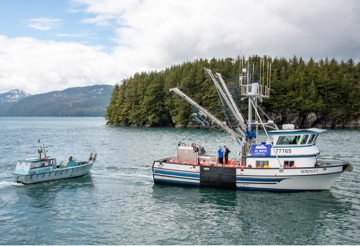
Prince William Sound catch jumps to 35.7M fish
Commercial harvests in Prince William Sound have reached over 35.7 million fish, including nearly 32 million pink salmon, up by over 5 million fish from a week earlier, according to the state’s latest preliminary commercial harvest reports. As of Wednesday, Aug. 4, that report showed harvesters delivering to processors in Prince William Sound 31.9 million pink salmon, 2.5 million chums, 1.3 million sockeye, 11,000 cohos and 7,000 Chinooks. The biggest overall contributor to the harvest to date is the Prince William Sound general seine fishery, >click to read< 09:12
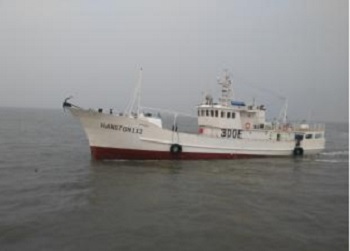
Customs Crackdown: U.S. blocks Fiji fishing boat from unloading, citing forced labor and debt bondage
Customs officials have blocked a commercial fishing boat from bringing tuna and other seafood into the United States, citing what they said was the use of forced labor by its operator, a company based in Fiji. The Customs and Border Protection agency said on Wednesday that it had found that operators of Hangton No. 112,a long-liner owned by the Hangton Pacific Co. Pte Ltd., had withheld workers’ wages, kept their identity documents and subjected them to debt bondage. If the vessel tries to dock at a U.S. port, or distribute its cargo in the country, officials said, its cargo would be held until its operator could prove that the fish were not caught using what the agency has described as “modern-day slavery.” >click to read< 10:35

Clayton Wyatt Smalley, in Coffman Cove, Alaska – “The man John Wayne wanted to be.”
Clayton died suddenly in his home of 45+ years in Coffman Cove, Alaska. He was born in Santa Barbara, CA, and shortly after birth moved to Alaska when his mother, Marcella Smalley “Opheim,” returned home. While not born in Alaska he was the essence of an Alaskan man, hardy, handy, possessing the inner strength and will to conquer whatever came his way. He was raised in a fishing family, spending summers at the family fish camp on Prince of Wales Island with his siblings and grandparents, Roy and Maude Opheim, while mom worked at the Waterfall cannery near Hydaburg. Each of us had our own skate and enjoyed the challenge of going alone to set and pull our gear. Camping on the beach every night, up before dawn to troll, gillnet or check our skate engrained a strong work ethic that few folk sleeping in a warm cozy bed can understand.,,, I know this is long but I hope you understand how hard it is to put the life a a man who lived like he was invincible and could do anything on one page. >click to read< 07:48
Athearn Marine Agency Boat of the Week: 104′ RSW Lobster/Crabber/Seiner, 850HP Cat, 2 Deere Auxiliaries
 To review specifications, information, and 51photos, >click here<, Vessel in good condition, and would make a great salmon tender seiner or west coast crabber. To see all the boats in this series >click here< 11:28
To review specifications, information, and 51photos, >click here<, Vessel in good condition, and would make a great salmon tender seiner or west coast crabber. To see all the boats in this series >click here< 11:28

As Salmon and Squid Seasons Rebound, New Questions
Over the last few months, hundreds of boats have been fishing off of, or transiting along Santa Cruz County’s coastline. Industry analysts report plenty of bright spots in both the salmon and squid markets this season. But after some scientific studies were scuttled last year because of the coronavirus pandemic, and other research couldn’t be completed due to wildfires, fisheries management is still undergoing its own pandemic comeback, as climate change fears remain ever-present. “It’s definitely been a good season,” Scotts Valley resident Hans Haveman, the CEO of H&H Fresh Fish at the Santa Cruz Harbor says during a late-June interview. “Unfortunately, regulation from the state and feds have shut us down right when it’s goin’ good.” video, >click to read< 08:50

Pandemic, labor , product shortages, and supply chain issues disrupt Dungeness Crab market
Seafood distributors, sellers and processors point to a number of factors that converged to create a perfect storm: the coronavirus pandemic, labor shortages, product shortages, supply chain issues and market demands. All have contributed to drive prices up from the usual $25 or so per pound to as much as $52. This season was difficult for many in the industry. It opened late and yielded a mere 12 million pounds to date, compared to last year’s 20 million. On average, commercial crabbers land around 16 million pounds in Oregon, though the fishery can be cyclical, with boom and bust periods. >click to read< 19:13
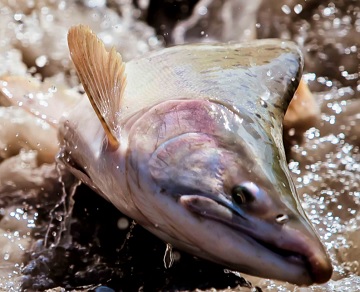
Invasive pink salmon populations are increasing throughout native Atlantic salmon waters
Fisheries biologists have been wringing their hands for decades in cold-water regions of the Pacific Ocean due to the proliferation of farmed Atlantic salmon and the threats they pose to native fish and the health of inshore waters, both in North America off the coasts of the U.S. and Canada, and in South America, where salmon farms are common off the coast of Chile. The threats are real, and there are lots of them,,, But, until recently, the presence of Pacific salmon in the North Atlantic hasn’t moved the “environmental disaster” needle much. That’s changing, thanks to an invasive Pacific salmon that is showing up in larger numbers in traditional Atlantic salmon rivers in Scandinavia, as far south as the British Isles and even to the east coast of Canada. The culprit in question is pink salmon, the smallest and most numerous of the Pacific salmon family. >click to read< 13:20
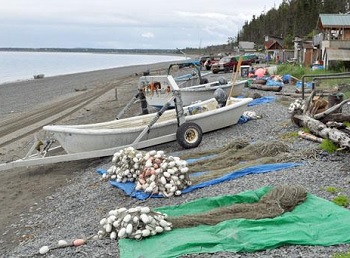
Board of Fisheries has denied two emergency petitions from Kenai Peninsula setnetters
Two setnetters, Chris Every and Paul Shadura II, submitted similar petitions to the board, asking that the department reopen the setnet fishery just out to 600 feet below mean high tide. They argue that the evidence shows that the 600-foot fishery harvests very few king salmon and allows them to harvest the nearshore sockeye, controlling escapement and providing fishing time without seriously risking kings. >click to read< 09:40

Kyle Richard Craig 37, of Sedro Woolley, WA, a Commercial Fisherman, has passed away
Kyle was born on February 6, 1984 in Seattle, WA to Rick and LoRayne Craig of Lynnwood, WA. Kyle was raised in Lynnwood, where as a youth, he enjoyed playing baseball, hockey and earned his athletic letter in golf while attending Edmonds-Woodway High School. Kyle’s love of fishing began as a child while on camping trips with his family to Jameson Lake. Trout fishing on the lake and participating in “Karen’s Fishing Derbies” led to a career as a Commercial Fisherman, fishing for crab in Alaska’s Bering Sea and black cod and halibut in the Gulf of Alaska. He loved the sea, his work, and appreciated his crewmates. >click to read< 19:45
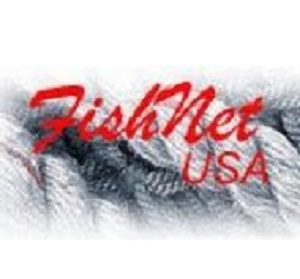
Wind farms: Where are all of the ocean saviors?
The precautionary principle has deep roots finding expression in sayings such as ‘an ounce of prevention is worth a pound of cure’ or ‘better safe than sorry’. The use of the precautionary principle in ecosystem management is especially important,,, Repeated failures of management highlighted by the collapse of northern cod off Canada, the California sardine fishery, and herring, sandeels, blue whiting and capelin stocks in the North Sea have demonstrated the need for this approach in order to help address scientific uncertainty. Yet when it comes to protecting huge swaths of ocean,,, Clog 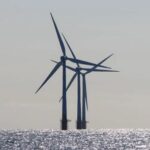 our near shore and offshore waters with hulking (approaching 1,000 feet tall today, who knows what’s in store for tomorrow?) structures supporting huge rotors with tips moving through the air at velocities approaching 200 miles per hour? So what? Festoon our sea beds with electrical cables carrying huge amounts of electricity, And what of undersea server farms,,, >click to read< 15:43 Nils E. Stolpe/FishNet USA. © 2021 Nils E. Stolpe, July 31
our near shore and offshore waters with hulking (approaching 1,000 feet tall today, who knows what’s in store for tomorrow?) structures supporting huge rotors with tips moving through the air at velocities approaching 200 miles per hour? So what? Festoon our sea beds with electrical cables carrying huge amounts of electricity, And what of undersea server farms,,, >click to read< 15:43 Nils E. Stolpe/FishNet USA. © 2021 Nils E. Stolpe, July 31
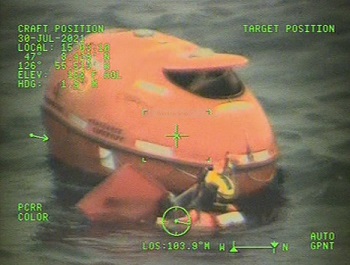
EPIRB alert launches Coast Guard rescue of a fisherman in a life raft Saturday, offshore of Grays Harbor.
At 11:39 a.m., Friday, watchstanders at the 13th Coast Guard District Command Center received an emergency position indicating radio beacon activation alert for the fishing vessel F/V Ruby Lily approximately 132 miles from Grays Harbor. Watchstanders launched crews from Coast Guard Air Station Astoria, Coast Guard Air Station Sacramento and the Coast Guard Cutter Alert to respond. A U.S. Navy P-8A Poseidon in the vicinity of the vessel self diverted to respond to the scene and reported one person aboard the life raft. The man aboard, who was also the owner of the Ruby Lily, reported he was safe in the rigid hull life raft with two weeks of food and water. A good Samaritan vessel in the area offered assistance, but the man on the life raft reportedly refused assistance from the good Samaritan. >click to read< 07:39

HEY POLITICIANS !!! The levelized cost of floating offshore wind farms – It is a financial disaster.
Last year, I wrote a blog post setting out the financial situation of Hywind, the UK’s first commercial floating offshore windfarm, and indeed the first in the world. It was an ugly tale, with a hugely lossmaking operation kept in the black only by a vast transfer of subsidies. However, Hywind has recently published its second set of financial results since it became fully operational,,, Situated off Peterhead, in what appears to be something of a sweet spot for wind, yadda. yadda, Meanwhile its costs are extraordinarily high. We already knew that its capital cost, at £8.9m/MW. was around three times the that of fixed offshore wind. But its opex costs are also much higher, >click to read<, Also a follow up article: “Clues to the levelised cost of tidal stream” – Yesterday, I set out the levelised cost of floating offshore wind turbines. In this article, I will look at what we know about the levelised cost of tidal stream energy, and show that it is probably even higher. >click to read< 15:32
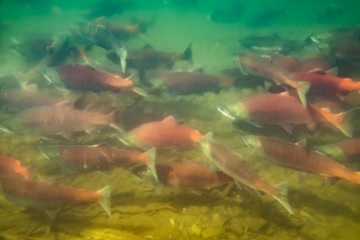
Bristol Bay Fisheries Report: July 30, 2021
It’s the final Fisheries Report of the 2021 season! Each summer, Alaskans take to the rivers, bays and oceans to subsistence fish. Some head out to set nets, others may use dip nets, all to stock up on enough fresh fish to last the winter.,, The late sockeye run to the Chignik River may be on track to meet its low-end escapement, but the early run likely won’t hit the mark. The Chinook run hasn’t reached its escapement, either. Commercial fishermen only had three openers to target pink and chum salmon in the inner bays. But lots of people spent the summer tendering in Bristol Bay. There will be one final daily run summary posted online Monday August 2nd, and the final season summary will be available mid-September. >click to read< 08:32

Fisherman at sea stabbed in the head by crewman facing charges of assault with a deadly weapon
A fisherman on a boat out at sea from the Half Moon Bay area was stabbed in the head by a crewmate but will survive,,, Orion Carlson, 39, of Chimacum, Washington, allegedly stabbed his crewmate in the back of his head, resulting in a several-inch-long laceration, with part of the knife breaking off in the victim’s head, prosecutors said. Other crewmates saw the incident and took the boat back to shore, where the man was rushed to the hospital and Carlson was arrested. The incident took place 10 a.m. July 27, while the crew was out squid fishing. >click to read< 14:37
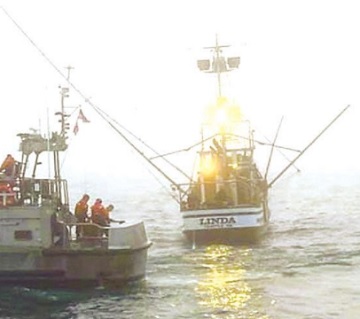
Newport, Oregon: Fishing vessels collide at sea in thick fog
U.S. Coast Guard crews safely escorted two small fishing vessels, one of which was taking on water, back to the dock after they apparently collided in thick fog about 12 miles offshore early Wednesday morning. The Coast Guard will investigate the cause of the incident, which was called into Station Yaquina Bay shortly after 5 a.m. Both fishing boats, F/V Chief Joseph and F/V Linda were still operable, but the Linda sustained damage to its hull and was taking on water. The Coast Guard crew passed over a pump in case it was needed to keep the fishing vessel afloat. >click to read< 13:54

Could B.C. commercial salmon fishery closures affect Southeast Alaska?
Department of Fisheries and Oceans Canada, the federal agency that manages Canada’s fisheries, effectively ended the 2021 commercial salmon season on the West Coast in late June. Canada’s fishing industry was stunned, says B.C. Seafood Alliance Executive Director Christina Burridge. “First Nations have harvested salmon forever. And post-contact, salmon canneries are what in the sense built this province. To be now in this situation seems really tragic to me.” The closure came just weeks after Canada announced a more than half-a-billion dollar plan to revitalize its flagging Pacific salmon stocks in B.C. and Yukon Territory.,, The Chinook on the transboundary rivers Unuk and Chilkat are among the current Southeast stocks of concern. >click to read< 10:11
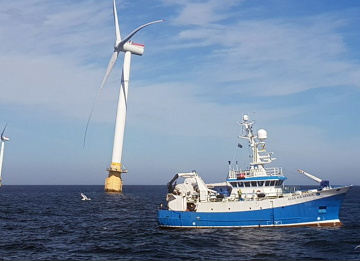
Equinor to trial safe fishing with floating offshore wind farm at Hywind Scotland. No Dragging, though.
Hywind Scotland’s operator Equinor and Scottish government agency Marine Scotland will work together to better understand how fishers can safely operate around and within floating offshore wind farms. In a survey scheduled for 2022, Marine Scotland will test three kinds of fishing gear: creels, fish traps and jigging lines at Hywind Scotland.,, California dreaming – Elsewhere in floating offshore wind, BOEM has decided to determine industry interest in developing offshore wind at two sites in a 1,033km2 area off central California,,, >click to read< 22:05
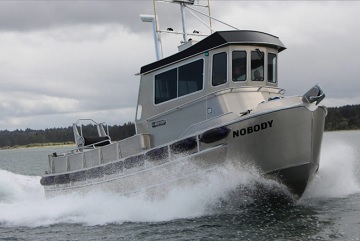
A Perfect Pairing. A Q&A session with John Deere and Mike Blocher of North River Boats
North River Boats in Roseburg, Oregon is one of the largest heavy-gauge aluminum boat manufacturers in the United States with an estimated 10,000 vessels plying the water today. The company continues to diversify, adding the legendary Bristol Bay hull to its lineup. John Deere: What led to the building of this new commercial fishing vessel? Mike Blocher: We build heavy-gauge aluminum boats. During an International Workboat Show, we were approached to build a bay boat. Our general manager and I traveled to Bristol Bay and started looking at boats, talking with fishermen, and found out what worked and what did not. JD: What did you find out? MB: Bristol Bay is unlike any other commercial fishery,,, >click to read< 11:06
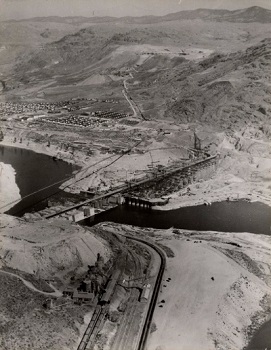
Flawed rescue? – Franklin D. Roosevelt asked for plans for a low dam. Joe Biden wants windmills
“The federal role in damming the Columbia tied in well with the New Deal belief that the government should stimulate economic recovery by putting people to work and encouraging the creation of public utilities,” records a National Park Service history of the river’s Grand Coulee dam. “Franklin D. Roosevelt, elected president of the United States in 1932, asked for plans for a low dam with foundations strong enough to support a higher dam later, one that would back water up to the Canadian border.” (President Joe Biden’s efforts to grow offshore wind) No thought was given to the river’s salmon. “Of all the impacts that caused extinctions of 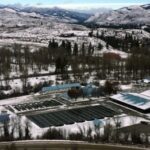 Columbia River Basin salmon and steelhead, dams were the most significant. “The dam wiped out runs that spawned in tributaries that drained into the Columbia from that point, river mile 596, to the headwaters, a distance of 645 river miles. Adding the tributary miles where salmon spawned nearly doubled the distance. >click to read< 14:36
Columbia River Basin salmon and steelhead, dams were the most significant. “The dam wiped out runs that spawned in tributaries that drained into the Columbia from that point, river mile 596, to the headwaters, a distance of 645 river miles. Adding the tributary miles where salmon spawned nearly doubled the distance. >click to read< 14:36
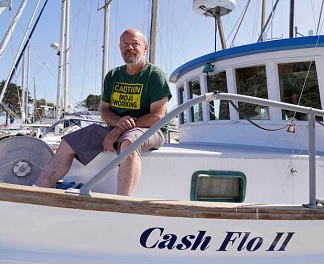
Warming rivers in US West killing fish, imperiling industry
Salmon fisherman Mike Hudson sits on the bow of his boat at the Berkeley, Calif., Marina on Thursday, July 22, 2021. Baby salmon are dying by the thousands in one river and an entire run of endangered salmon could be wiped out in another. The plummeting catch has led to skyrocketing retail prices for salmon, hurting customers who say they can no longer afford the $35 per pound of fish, said Hudson, who has spent the last 25 years catching and selling salmon at farmers’ markets in Berkeley. “An extreme set of cascading climate events is pushing us into this crisis situation,” said Jordan Traverso, a spokeswoman for the California Department of Wildlife and Fish. 14 photos, >click to read< 10:03

Fake ‘Green’ Energy: So Much Spent On Wind & Solar For So Little Return
Wind and solar are not just costly they are entirely useless. Never in the field of energy generation has so much been spent, by so many, for so little return. Forget the colossal and endless subsidies, forget the community division, forget the environmental destruction and landfills full of toxic blades and panels and start with the fact that wind and solar are simply incapable of delivering electricity as and when we need it. On that score, we’ll hand over to John Hinderaker for a look at wind and solar power’s utterly pathetic performance in the USA. At AmericanExperiment.org, my colleague Isaac Orr deals a double-barreled blow to the fantasy of “green” energy. First, after all of the hype surrounding wind and solar energy, where did Americans actually get their energy in 2020? >click to read< 09:20

Coast Guard search for missing fisherman off Seal and Sunset Beaches has been suspended
A 35-year-old crew member of the Sea Queen II, a 100 foot commercial fishing vessel, went missing Saturday. The U.S. Coast Guard and other agencies were searching for the man, described as Asian and wearing a red sweatshirt and black sweatpants, in the ocean waters off of Sunset and Seal Beaches. He was last seen at around 2 a.m. when the boat was anchored in the area being searched, according to the Coast Guard. Video, >click to read< – Coast Guard suspends search for crewman missing near Seal Beach – After searching more than 43 square miles off the coast of Sunset Beach and Seal Beach for more five hours, the U.S. Coast Guard suspended it’s search, >click to read< 11:50
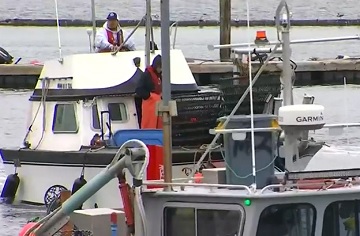
Tribal fishermen claim WDFW targeting tribal members in new age of Fish Wars
It’s been more than five years since two Tulalip Tribe members were taken into custody at a marina in Everett; but what led up to that moment is still a debate that’ll be settled in court. What’s clear is that regardless of how the court system plays out, neither side will ever see eye-to-eye. Hazen Shopbell, one of the tribal members, says it’s the new age of the Fish Wars, an era when tribal fishermen were beaten and battered for attempting to fulfill their treaty rights in Puget Sound. The Washington Department of Fish and Wildlife says what played out is a standard investigation, that two fishermen violated state laws and trafficked in illegal shellfish trade. >click to read< 08:41
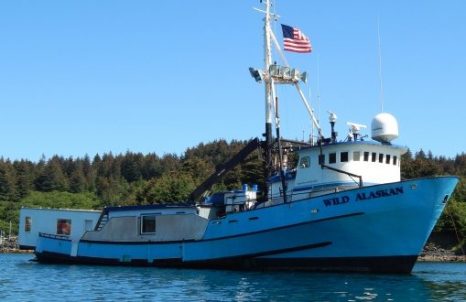
Before she was Wild Alaskan, she was the F/V Shaman – and she ruled the King Crab fishery
Long before strippers gyrated for fishermen who boarded the Wild Alaskan for a night of fun, she was known as the F/V Shaman, one of the most profitable boats to ever throw pots in Alaskan waters. She had a million-dollar price tag when she was built in Tacoma in 1974, 110 feet long with a high wheelhouse. Made to shrimp and crab. And boy did the Shaman crab. Tom Hendel and his brother worked on the crew back in the late 70’s, when the Shaman was in its glory days. Back then, as Kodiak fishermen are fond of saying, “Crab was king.” And it was. Some made millions in the Bering Sea. But other mariners were not so lucky. “I gotta tell you, guys were dying every day it seemed like, back in the 70s and 80s. >click to read< 22:41 >Click for Wild Alaskan posts back to July 5, 2014<

Derelict fishing vessel sinks off Point Whitehorn
The derelict 1930s fishing vessel sank off Point Whitehorn while being towed from Blaine Harbor to Bellingham. The Bligh Island, a 79-foot wooden hull purse seiner, had been in the Port of Bellingham’s custody since 2017. The port put the abandoned boat up for auction, but there were no bidders, port public affairs administrator Mike Hogan said.,, The boat sank in about 160 feet of water off Point Whitehorn at the end of Birch Bay. To Hogan’s knowledge, the vessel is the first boat owned by the Port of Bellingham to sink. >click to read< 16:21

James William Salter Jr., longtime Half Moon Bay commercial fisherman, has crossed the bar
Jim graduated from Los Altos High School in California where he met his childhood sweetheart, Jan. After many camping trips to Half Moon Bay, he and Jan decided to make the tranquil coast their home. His work ethic and desire to take care of his family led him to become a self-taught commercial fisherman for over 48 years. Together Jim and Jan ran Salter Crab Co., a business his children were also actively a part of, bringing live crab and troll-caught king salmon to farmers markets around the Bay Area for over 30 years. He introduced rock crab, a delicious, sweet but smaller crab with egg row, a highly sought-after delicacy to their numerous customers. “Eat rock crab, be strong, live long,” he would always say. Above all, Jim was an amazing husband and an extraordinary father and grandfather. >click to read< 20:50
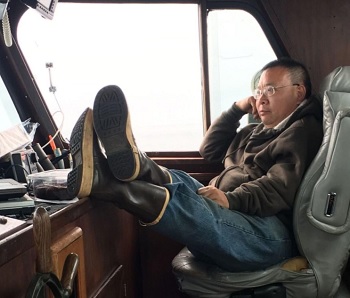
Captain Frank Gee remembered as a caring, and meticulous fisherman
If anyone was prepared for the dangers of the ocean, it was San Francisco resident and local fisherman Frank Gee. But earlier this month, his body was found washed ashore in Moss Beach. It was a shock to his family and the local fishing community who remembered a meticulous fisherman and caring brother who had survived the dangers of the sea before.,, He was no different as a fisherman and captain. Just years earlier, Gee, Erica Clarkson and Joshua “Aubri” Gift had survived the burning of his beloved boat, the F/V Ocean Gale, after an engine fire consumed the craft in just minutes. The details of the story are harrowing,,, “When they heard it was the Ocean Gale, everyone came running,” Clarkson said. “He loved that boat and when it burned it devastated all of us.” >click to read< 13:37



































